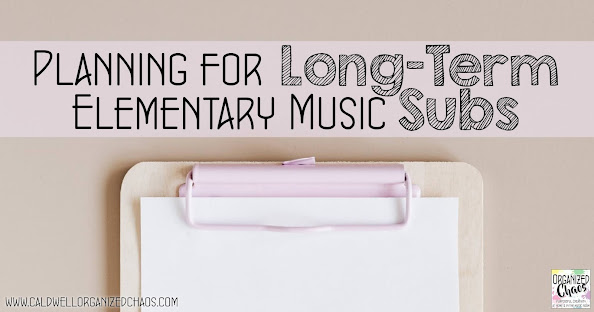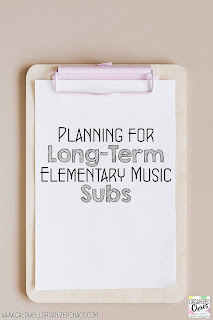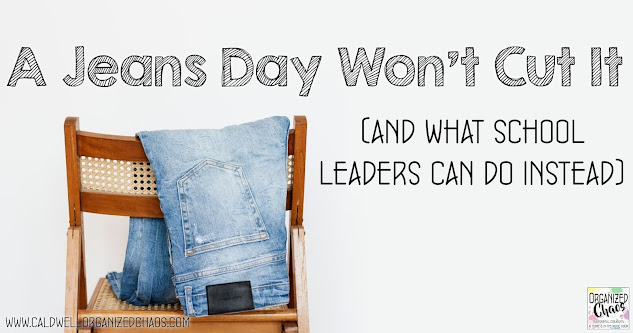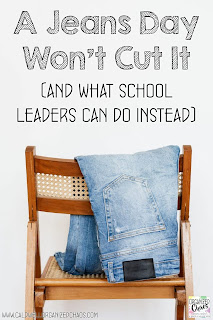
Tuesday, November 30, 2021
Planning for Long-Term Elementary Music Subs
Tuesday, November 23, 2021
My New Favorite Sub Plan Format
- "Around the World" game with treble or bass clef letter names
- Rhythm play-alongs
- Vocal exploration- tell students to follow my finger with their voice, then tell them to take turns drawing in the air for the class to follow
- Composition- review whatever concept they've been learning (dynamics, tempo, rhythm etc) and tell students to come up with a found sound/ body percussion piece with a small group that includes that concept
Tuesday, November 16, 2021
One Jeans Day Won't Cut It (and what school leaders can do instead)
Tuesday, November 9, 2021
Be the Encourager
It's tough out there. Pandemic protocols, lack of respect from society, systemic inequities, trying to meet the increasing needs of students with decreasing budgets, and a growing teacher shortage make an already mentally, emotionally, and physically taxing profession even more stressful. I know so many are just plain burned out, and many are contemplating leaving the profession. I'm not here to offer a solution to these issues, but rather offer one intentional change I've made that has improved my outlook.
Be the encourager.
I know for me personally, I feel a little uncomfortable offering overt words of affirmation to colleagues- it felt very weird the first time I did it. But I realized a few years ago that the one thing that improved my attitude, reduced my stress, and strengthened my relationships with the people around me more than anything else was hearing words of affirmation and encouragement from other people. Whether from a student, colleague, or administrator, when I'm feeling most worn down with the worries and stress of everyday life, the smallest compliment or expression of gratitude can completely change my outlook on everything.
Of course all of us need the time and space to vent, and it can be helpful to share struggles and know that others are in the same boat as you, but often we can get stuck in a pattern of negative thinking and self-talk that only serves to sink us further and further into stress.
A few years ago I made the conscious decision that, no matter how uncomfortable it felt, I was going to be intentional about regularly writing cards, and verbally telling people, to let my colleagues, students, and administrators know the positive things I notice about them. I've been pretty intentional about doing this with my students in the classroom for a while, so that part was easy, but I found it much more awkward at first to compliment colleagues and administrators. But I found that when I started thinking about what I could say and who might need to hear it most, it dramatically improved my mental and emotional state in the day to day. And as you might expect, others appreciated the affirmation, and started to return the favor more often as well.
This isn't a magical fix for the very real problems we're dealing with, or an attempt to minimize those problems. But focusing your attention on looking for people who need encouragement and thinking of positive things to say can have a much bigger influence on your own outlook at work, and on the climate in the building as a whole, than you might imagine.
So if you haven't already, give it a try: be the encourager.









